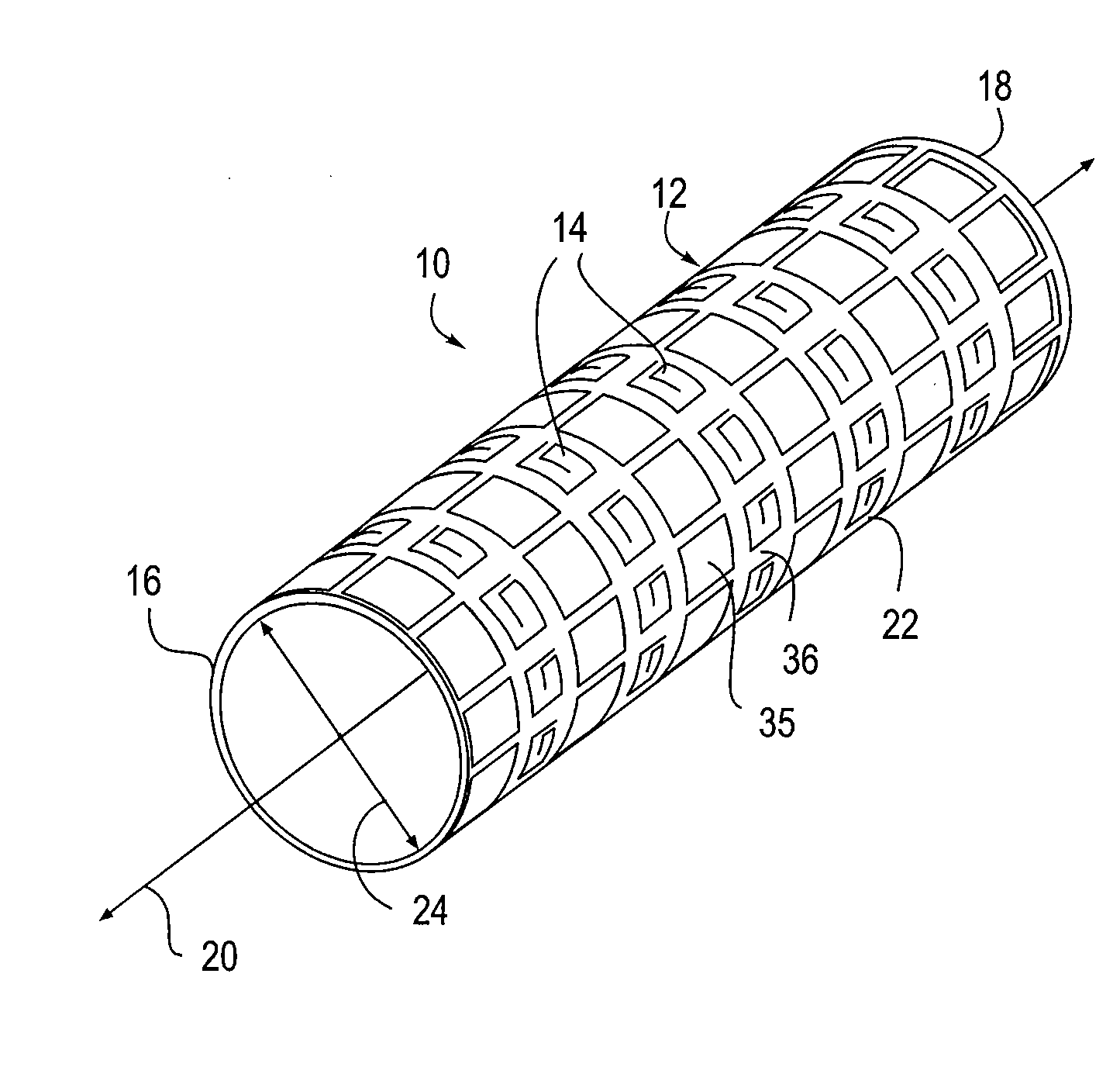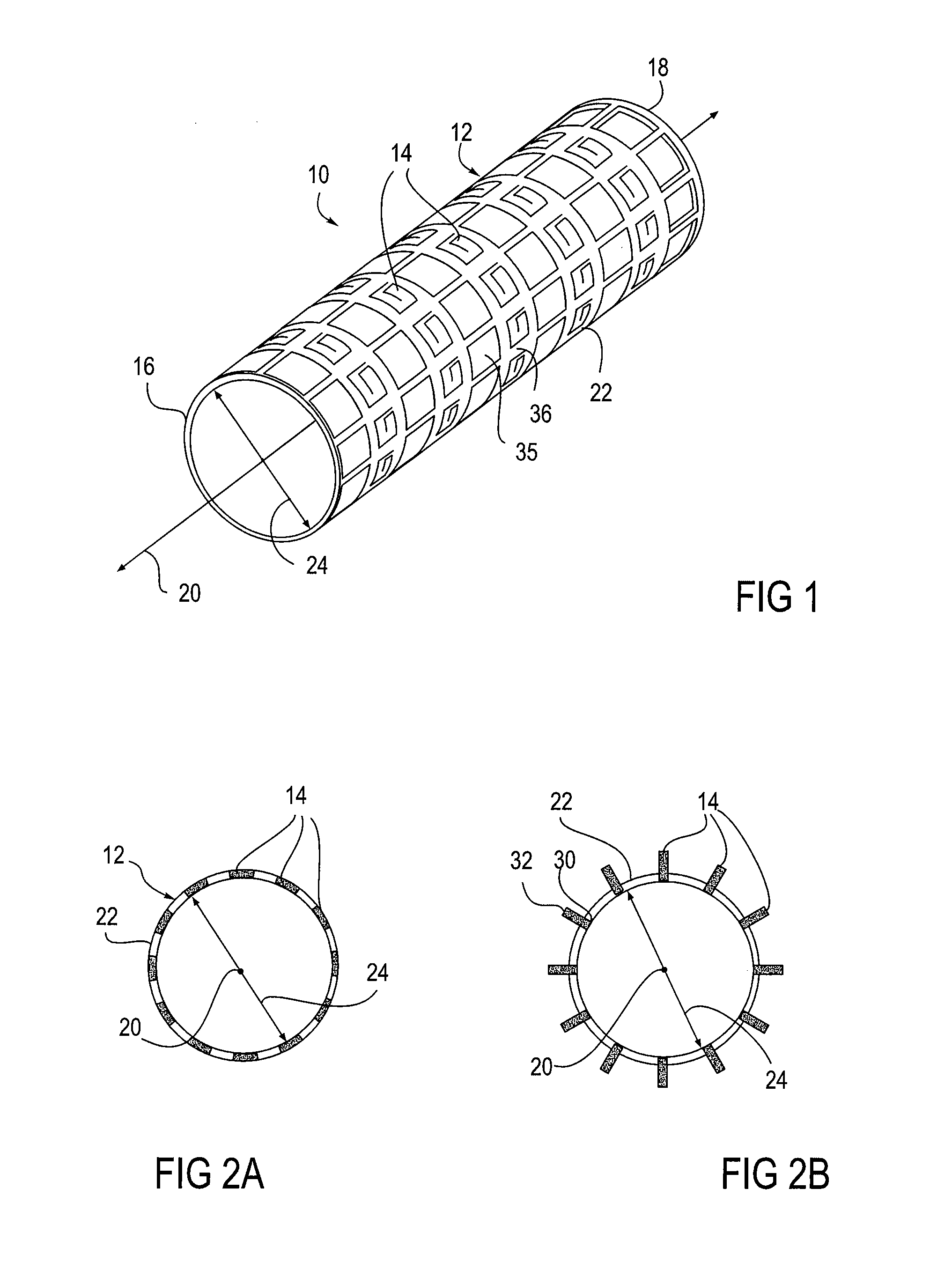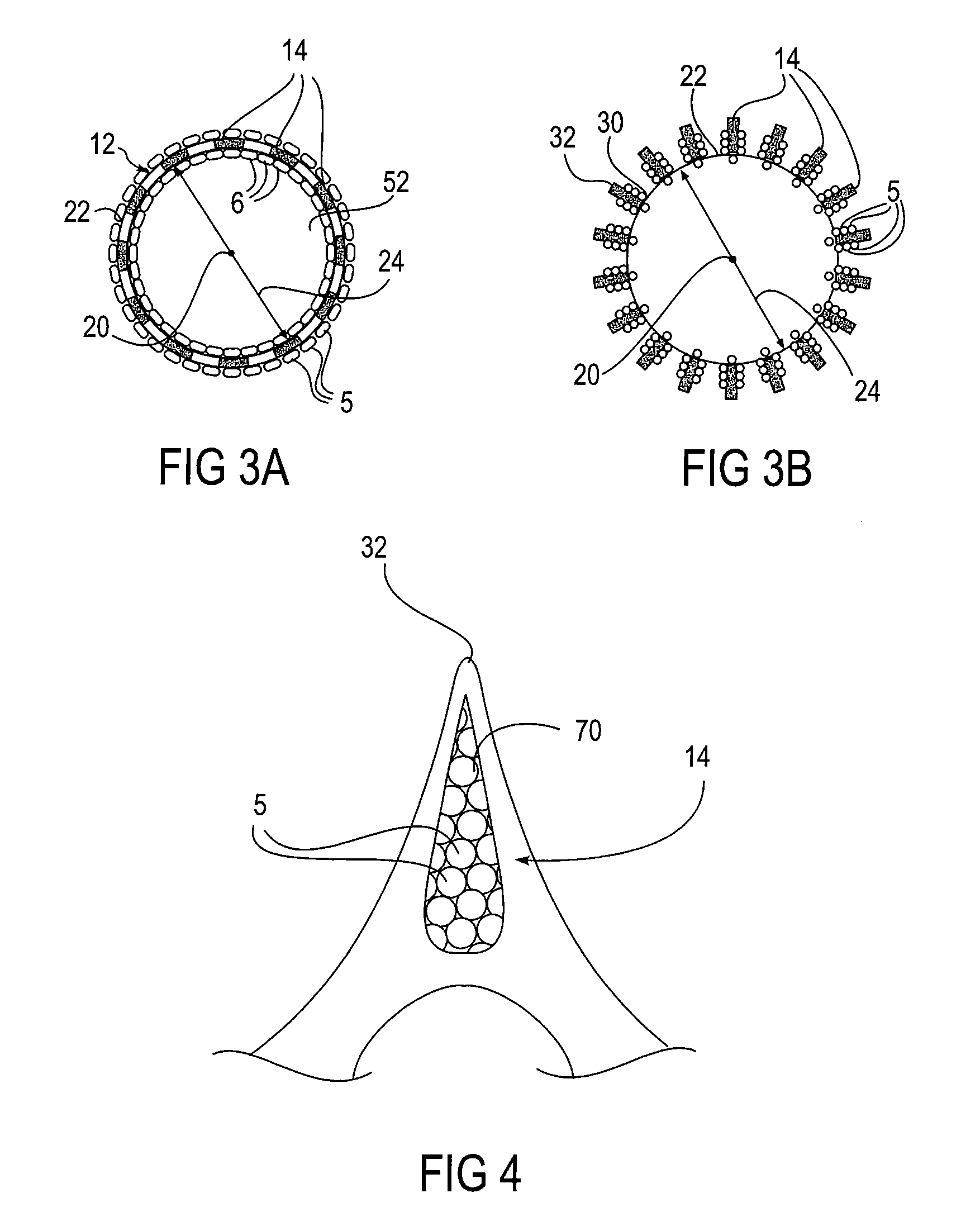Cell seeded expandable body
a cell seeded, expandable body technology, applied in the field of applicatives, systems and methods of treating patients, can solve the problems of coronary arteries suffering restenosis (reblockage), ensuing fatal hemorrhage, rupture of aorta, etc., to enhance the desired properties of unmodified cells, enhance matrix production, and enhance tissue repair and regeneration
- Summary
- Abstract
- Description
- Claims
- Application Information
AI Technical Summary
Benefits of technology
Problems solved by technology
Method used
Image
Examples
Embodiment Construction
[0059]It may be appreciated that any combination of the above described cell types and expandable body types may be used. However, for clarity of description, cells will mainly be described and illustrated as generic “cells” representing any of the described cell types. In addition, the expandable bodies will mainly be described and illustrated as comprising a device having deployable microstructures. However, this is not intended to limit the scope of the invention as the features provided may apply to any of the expandable body types.
Overview
[0060]Referring to FIG. 1, an embodiment of an apparatus 10 of the present invention is illustrated, the apparatus 10 comprises an expandable body 12 and at least one microstructure 14. The expandable body 12 has a proximal end 16, a distal end 18, a longitudinal axis 20 therebetween. A cross-sectional diameter 24 is also shown. In this embodiment, the expandable body 12 comprises a cylindrical structure surrounding the longitudinal axis 20. H...
PUM
| Property | Measurement | Unit |
|---|---|---|
| angle | aaaaa | aaaaa |
| heights | aaaaa | aaaaa |
| heights | aaaaa | aaaaa |
Abstract
Description
Claims
Application Information
 Login to View More
Login to View More - R&D
- Intellectual Property
- Life Sciences
- Materials
- Tech Scout
- Unparalleled Data Quality
- Higher Quality Content
- 60% Fewer Hallucinations
Browse by: Latest US Patents, China's latest patents, Technical Efficacy Thesaurus, Application Domain, Technology Topic, Popular Technical Reports.
© 2025 PatSnap. All rights reserved.Legal|Privacy policy|Modern Slavery Act Transparency Statement|Sitemap|About US| Contact US: help@patsnap.com



